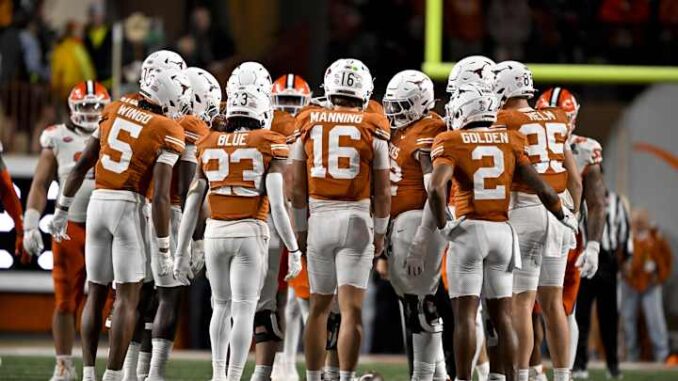
Texas Football Declines $35–40 Million Roster Spending Proposal Amid Debate Ove NIL and College Sports Economics**
**Austin, TX — April 30, 2025** — In a significant move that could influence the ongoing debate around the economics of college sports and the evolving role of NIL (Name, Image, and Likeness) compensation, the University of Texas football program has reportedly declined to pursue a proposed $35–40 million annual expenditure to build and maintain its roster through NIL-related deals.
According to multiple sources close to the Longhorns athletic department, a proposal was recently floated that would see Texas ramp up NIL investments to secure top-tier talent, maintain competitiveness in the SEC, and essentially “pay to win” in a landscape that is becoming increasingly commercialized. However, after internal discussions and consultations with legal advisors, boosters, and university leadership, the program opted not to move forward with such a spending plan.
### A Line in the Sand
Texas Athletic Director Chris Del Conte addressed the decision during a press availability on Monday, stating, “We are committed to supporting our student-athletes and maximizing their NIL opportunities. However, we are not going to treat this program like a professional sports franchise with unchecked spending. Our commitment is to the student-athlete experience and sustainable success.”
Del Conte emphasized that while the university is one of the most resource-rich in the country, there is a distinction between supporting NIL and orchestrating what some have called “semi-professional roster building.” The suggestion to allocate up to $40 million annually would have made Texas one of the biggest spenders in the NIL arms race — rivaling or surpassing even top-tier SEC programs like Alabama and Georgia.
### Tension Between Tradition and Transformation
The proposed NIL budget, reportedly discussed by high-level donors and NIL collectives associated with the program, aimed to create a war chest that could be used to lure top recruits and retain key players amid fierce competition. Proponents of the plan argued that in order to compete at the highest level in the current landscape, such spending is not just helpful — it’s necessary.
“There’s no way around it,” one anonymous booster said. “If you want to win championships, you have to pay for the talent. That’s the new reality.”
But critics, including some within the university administration and faculty, raised concerns about the ethics, legality, and long-term consequences of building a college football team on what amounts to a free-market salary structure. There are also fears that the emphasis on financial incentives could damage the academic mission and amateur spirit that college sports are supposed to embody.
### The Bigger Picture: NCAA in Flux
This development comes as the NCAA and Congress continue to wrestle with the future of college athletics. Multiple court cases and legislative proposals could soon reshape the definition of amateurism, with some advocating for revenue-sharing models and collective bargaining rights for athletes.
Texas’ decision may influence how other major programs approach NIL spending. While many schools have embraced NIL collectives and donor-driven initiatives, few have publicly acknowledged or rejected large-scale funding proposals like the one Texas just turned down.
### Still Competitive — Just Not at Any Cost
Despite this decision, the Longhorns remain highly competitive. Head coach Steve Sarkisian has secured back-to-back top-10 recruiting classes and led the team to a College Football Playoff appearance in 2024. With state-of-the-art facilities, passionate fan support, and an enviable national brand, Texas continues to attract elite athletes.
“NIL is part of the game, and we’re in that game,” Sarkisian said when asked about the funding decision. “But we believe in building a culture, not just buying talent.”
### What’s Next?
The refusal to greenlight a $35–40 million NIL budget doesn’t mean Texas is exiting the NIL playing field altogether. Rather, insiders suggest the university will continue to support NIL through structured partnerships, alumni engagement, and educational initiatives — just without entering what some fear could become an unsustainable bidding war.
As the line between college and professional sports continues to blur, Texas’ decision may mark a turning point — a signal that not every program is willing to chase titles at any price.
Leave a Reply